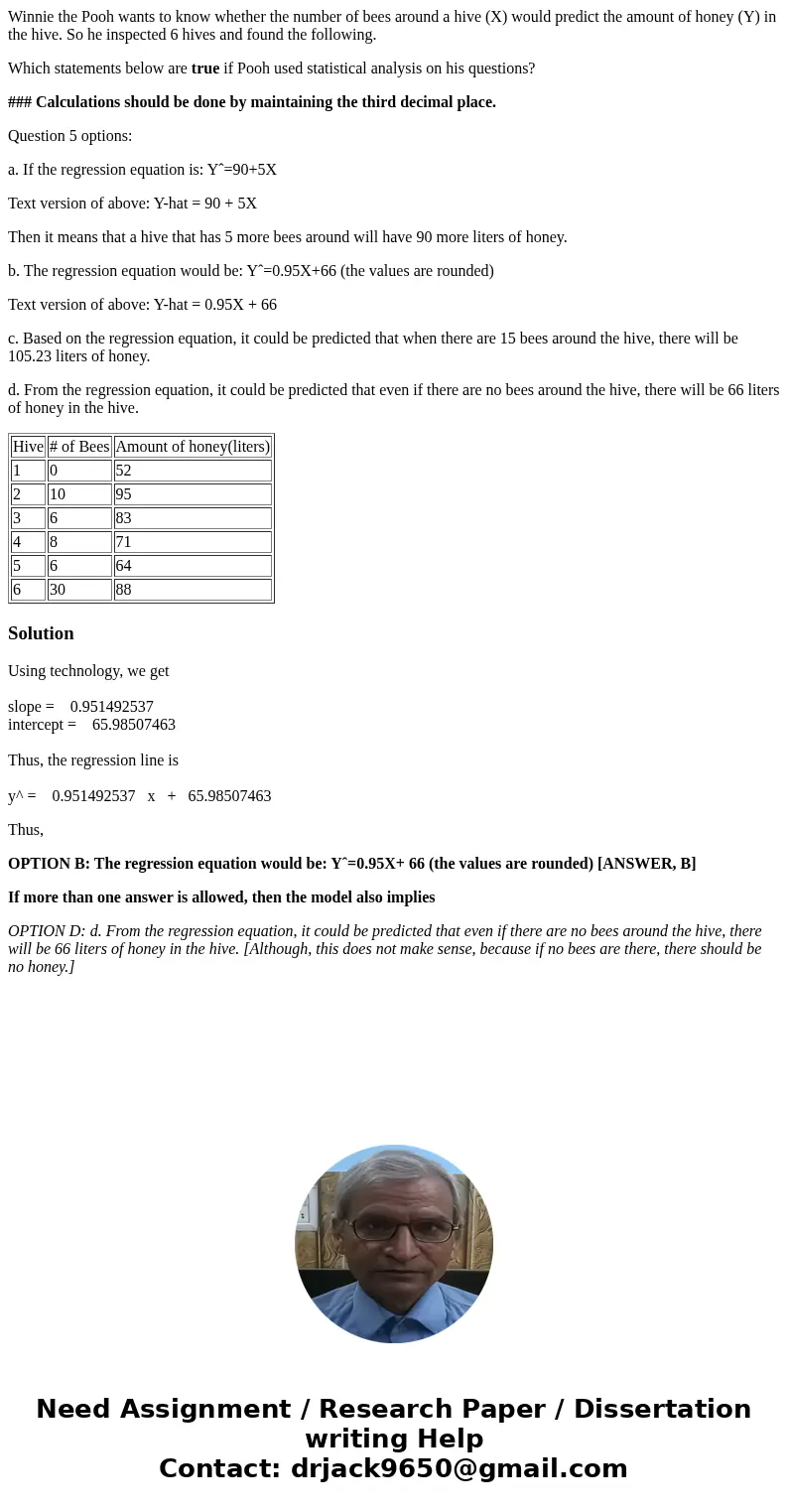Winnie the Pooh wants to know whether the number of bees aro
Winnie the Pooh wants to know whether the number of bees around a hive (X) would predict the amount of honey (Y) in the hive. So he inspected 6 hives and found the following.
Which statements below are true if Pooh used statistical analysis on his questions?
### Calculations should be done by maintaining the third decimal place.
Question 5 options:
a. If the regression equation is: Yˆ=90+5X
Text version of above: Y-hat = 90 + 5X
Then it means that a hive that has 5 more bees around will have 90 more liters of honey.
b. The regression equation would be: Yˆ=0.95X+66 (the values are rounded)
Text version of above: Y-hat = 0.95X + 66
c. Based on the regression equation, it could be predicted that when there are 15 bees around the hive, there will be 105.23 liters of honey.
d. From the regression equation, it could be predicted that even if there are no bees around the hive, there will be 66 liters of honey in the hive.
| Hive | # of Bees | Amount of honey(liters) |
| 1 | 0 | 52 |
| 2 | 10 | 95 |
| 3 | 6 | 83 |
| 4 | 8 | 71 |
| 5 | 6 | 64 |
| 6 | 30 | 88 |
Solution
Using technology, we get
slope = 0.951492537
intercept = 65.98507463
Thus, the regression line is
y^ = 0.951492537 x + 65.98507463
Thus,
OPTION B: The regression equation would be: Yˆ=0.95X+ 66 (the values are rounded) [ANSWER, B]
If more than one answer is allowed, then the model also implies
OPTION D: d. From the regression equation, it could be predicted that even if there are no bees around the hive, there will be 66 liters of honey in the hive. [Although, this does not make sense, because if no bees are there, there should be no honey.]

 Homework Sourse
Homework Sourse